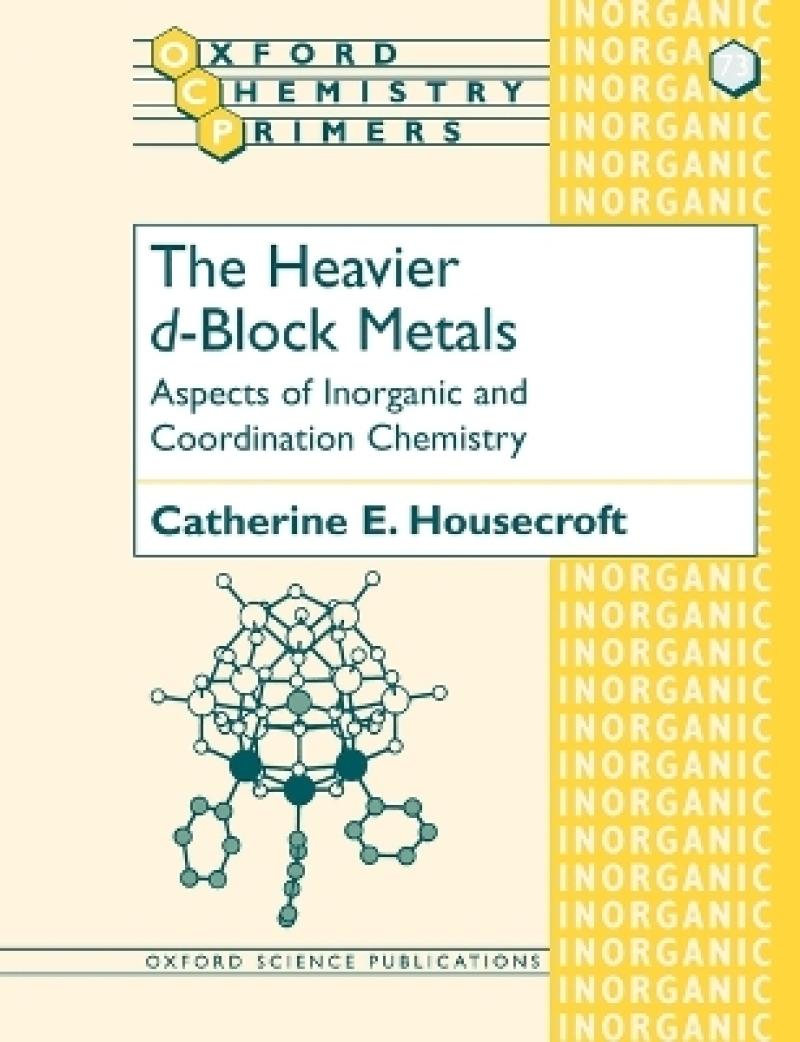This book addresses the chemistry of the second and third row d-block metals, assuming a knowledge of the chemistry of the first row metals.
Chapter 1 looks at the metals and summarizes occurrence, physical properties and uses.
Chapter 2 considers periodic trends in properties.
Chapter 3 considers aqueous solution chemistry, species present (with comparisons of the first row metal ions) and redox properties.
Chapter 4 surveys structure: the range of coordination numbers shown by second and third row metals is often a topic for discussion in University courses.
Chapter 5 looks at electronic spectra and magnetic properties, making comparisons with the first row the main objective of the chapter. Detailed mathematical treatments are not given.
Chapter 6 considers metal-metal bonding, and the classes of compound that contain triple and quadruple bonds; the role of bridging ligands is introduced.
Chapter 7 looks at selected clusters with a pi donar ligands (e.g. metal halo species) in which metal-metal bonding is important.
Chapter 8 introduces the area of polyoxometallates, closing with a short discussion of the wide range of applications.
The book contains many references to encourage wider reading by the student; in addition to textbooks of relevance, the author has included many recent literature citations, and a section called "Metals in Action" which gives citations which show the heavier metals at work in, for example, catalytic converters and molecular wires.
Les mer
This book addresses the chemistry of the second and third row d-block metals, assuming a knowledge of the chemistry of the first row metals.
This slender book is aimed at undergraduate students who have just been introduced to the inorganic and coordination chemistry of the second and third row d-block metals. It is carefully structured, clearly written, well illustrated, and provides up-to-date references from current literature...providing a much-needed introduction to the underlying chemistry of the heavier d-block metals, while touching a wide range of topics. It should be of great benefit to all with an interest in the heavier d-block metals./Alvin A. Holder/Chemistry in Britain July.
Les mer
This slender book is aimed at undergraduate students who have just been introduced to the inorganic and coordination chemistry of the second and third row d-block metals. It is carefully structured, clearly written, well illustrated, and provides up-to-date references from current literature...providing a much-needed introduction to the underlying chemistry of the heavier d-block metals, while touching a wide range of topics. It should be of great benefit to
all with an interest in the heavier d-block metals./Alvin A. Holder/Chemistry in Britain July.
provides a good introduction to the descriptive chemistry./Andrea Sella/Oxford Chemistry Primers No 73.
Les mer
Produktdetaljer
ISBN
9780198501039
Publisert
1999
Utgiver
Vendor
Oxford University Press
Vekt
225 gr
Høyde
245 mm
Bredde
188 mm
Dybde
6 mm
Aldersnivå
U, 05
Språk
Product language
Engelsk
Format
Product format
Heftet
Antall sider
96
Forfatter
